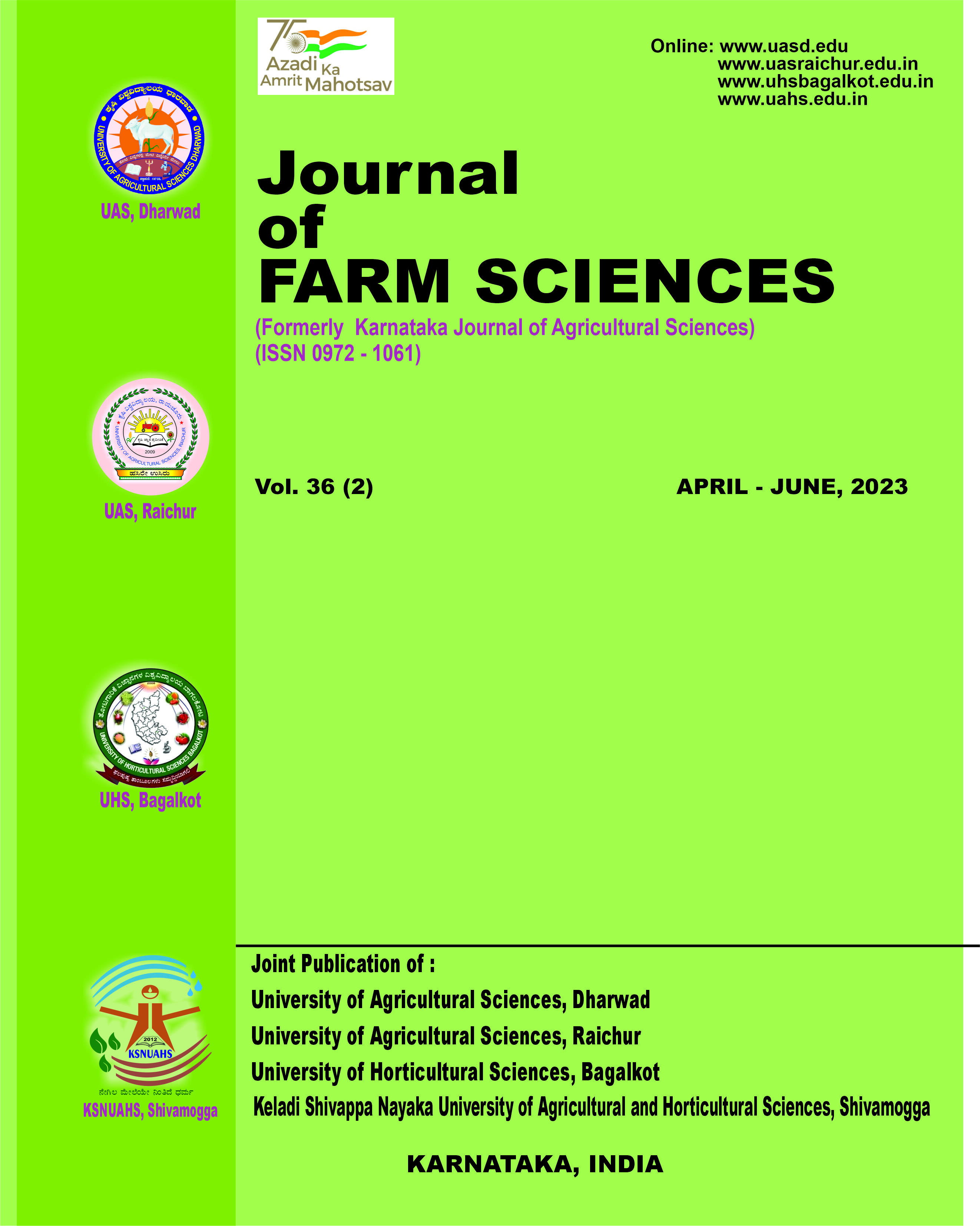In-vitro evaluation of fungicides and bio-agents against Fusarium solani (Mart.) Sacc.inciting dry root rot/wilt of acid lime in northern Karnataka
Keywords:
Acid lime, Bio-agents, Dry root-rot/wilt, Fungicides, In vitro, Per cent inhibition
Abstract
Acid lime (Citrus aurantifolia Swingle) is one of the four commercially important citrus fruit crop grown in Indiaamong the citrus species. It belongs to the family Rutaceae and genus Citrus aurantifolia (Swingle). Among many soil bornediseases of acid lime, dry root rot/wilt is considered to be a severe disease caused by Fusarium solani which is prevalent innorthern Karnataka. Present investigation was carried out under In vitro condition to know the efficacy of fungicides andbio-agents against F. solani for further evaluation under field condition benefitting the farmer’s. Results revealed that all thetested fungicides significantly inhibited mycelial growth of tested pathogen over untreated control. Among the five systemicfungicides evaluated, Carbendazim 50 WP (98.37%) was superior over all other treatments followed by Propiconazole 25EC (85.68%), Tebuconazole 250 EC (76.88%) and Hexaconazole 5 SC (68.92%). However, the least inhibition of mycelialgrowth was observed in Metalaxyl MZ 68WP (6.72%) at 500, 1000, 1500 ppm. Combi product hexaconazole 5% + captan70% WP was significantly superior (74.55%) over all the other non-systemic fungicides evaluated. The next best treatmentwas found to be captan 50 WP (26.14%) at 1000, 2000, 2500 ppm concentrations. All the four bio-agents evaluatedexhibited antifungal activity against Fusarium solani. It was noticed that, maximum reduction in colony growth wasobserved in Trichoderma harzianum (80.99%) followed by Purpureocillium lilacinum with 77.08 per cent inhibition. Theleast inhibition was observed in Pseudomonas fluorescens (39.82%)
Published
2023-03-20
How to Cite
SAJJAN, S., ANJUM, S., JAMADAR, M., & NEGALUR, R. (2023). In-vitro evaluation of fungicides and bio-agents against Fusarium solani (Mart.) Sacc.inciting dry root rot/wilt of acid lime in northern Karnataka. Journal of Farm Sciences, 36(01), 71-74. https://doi.org/10.61475/jfm.v36i01.344
Section
Research Article
Copyright (c) 2023 Journal of Farm Sciences

This work is licensed under a Creative Commons Attribution-NonCommercial-NoDerivatives 4.0 International License.


